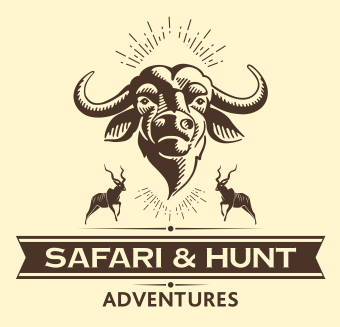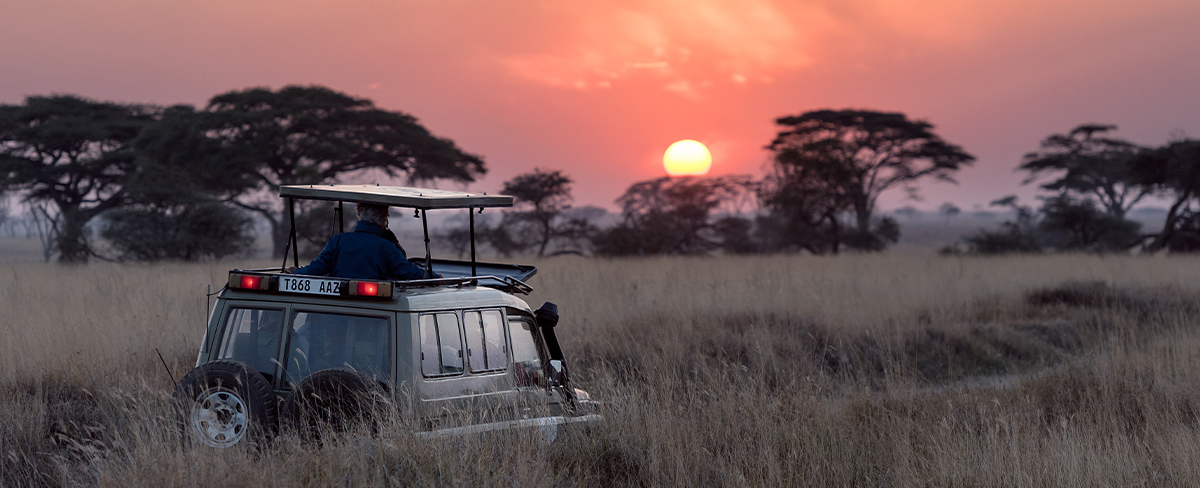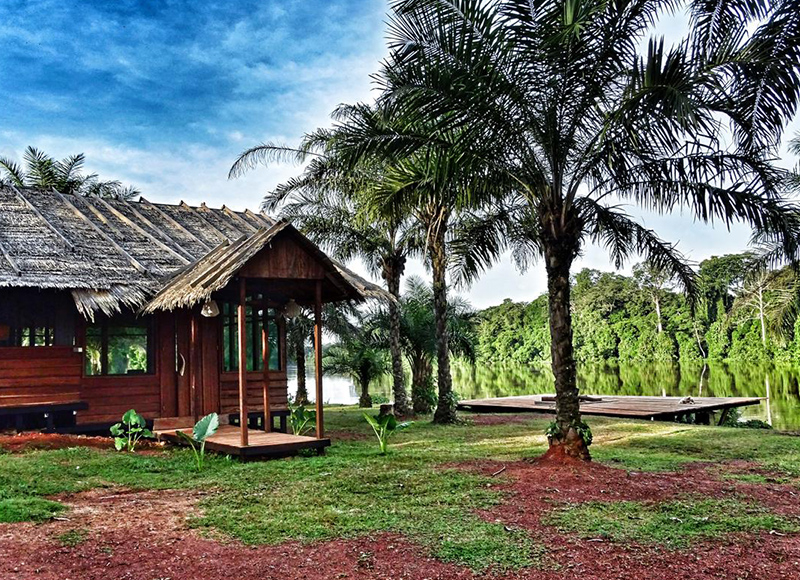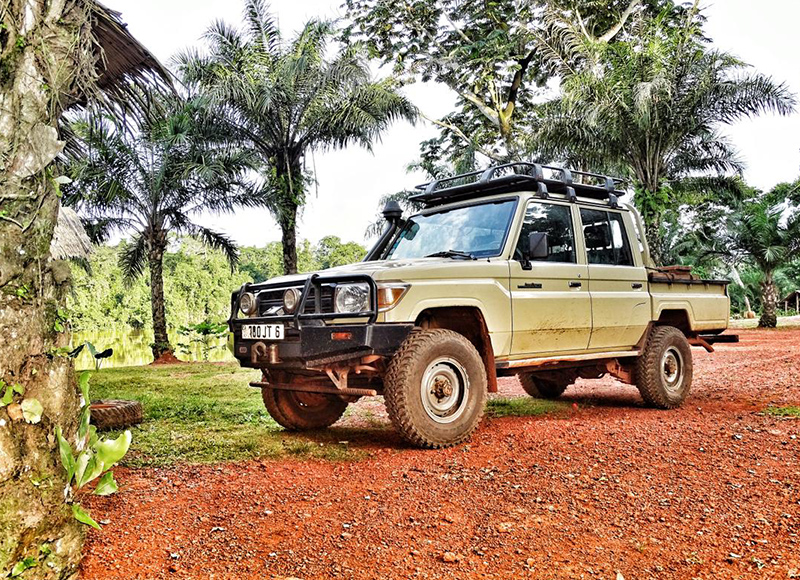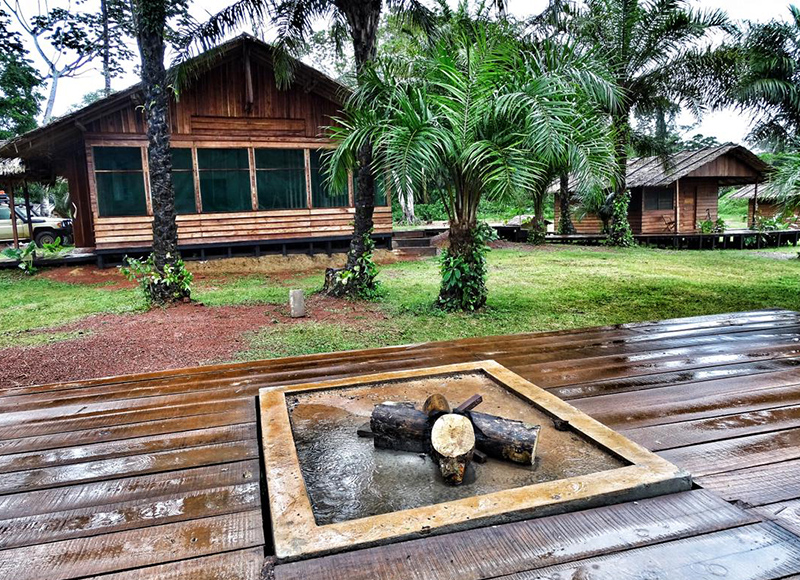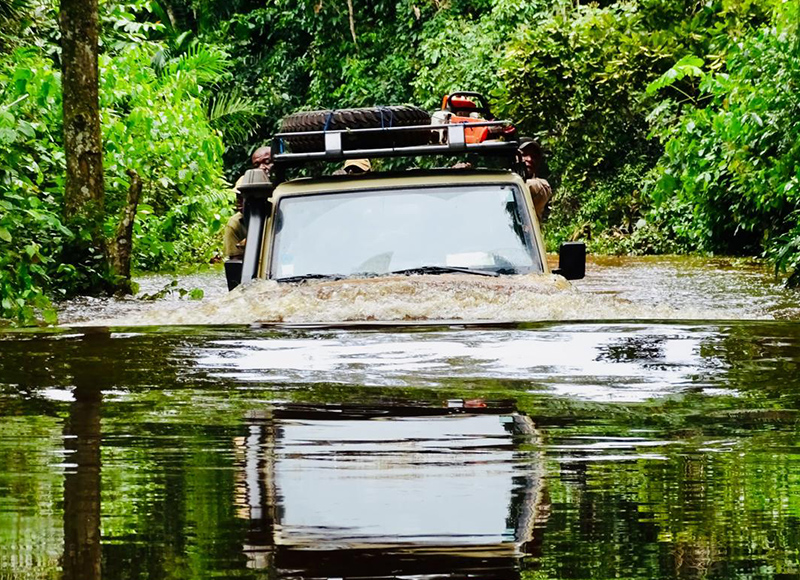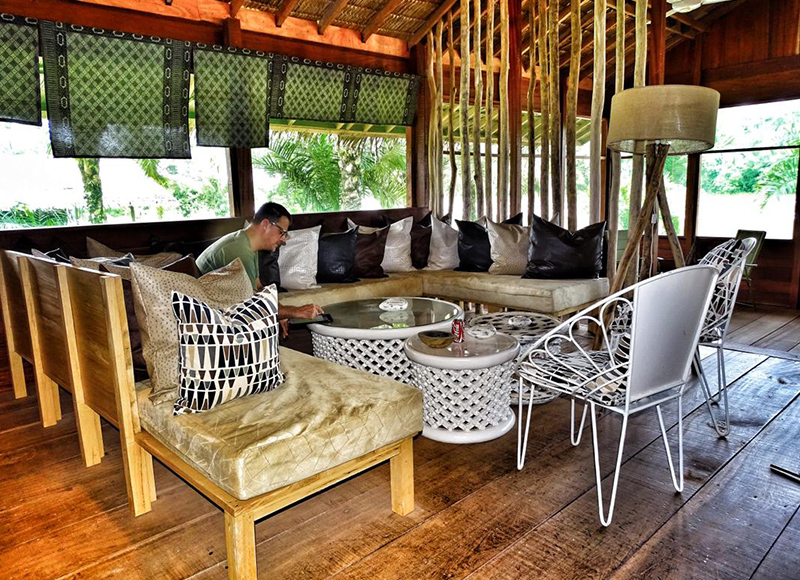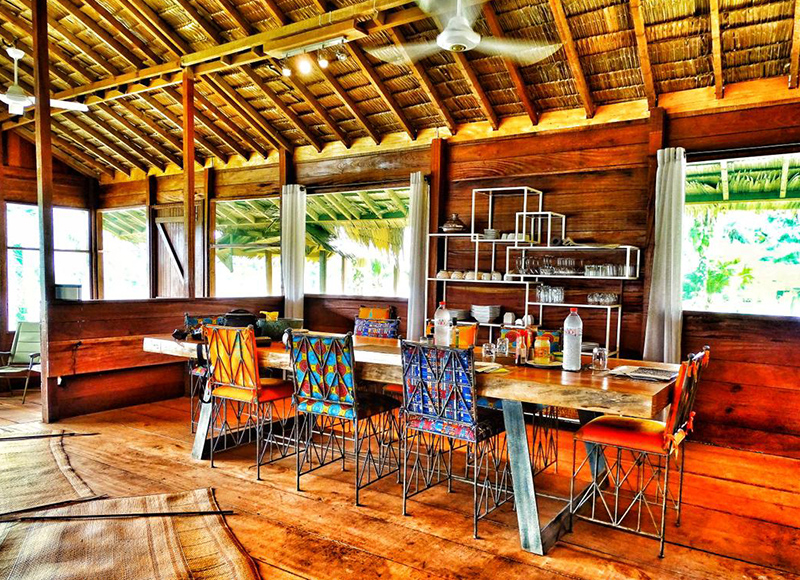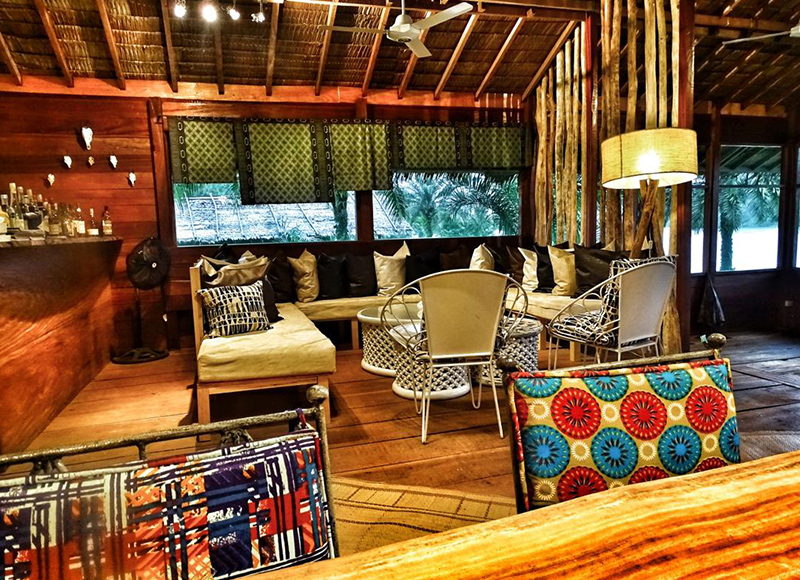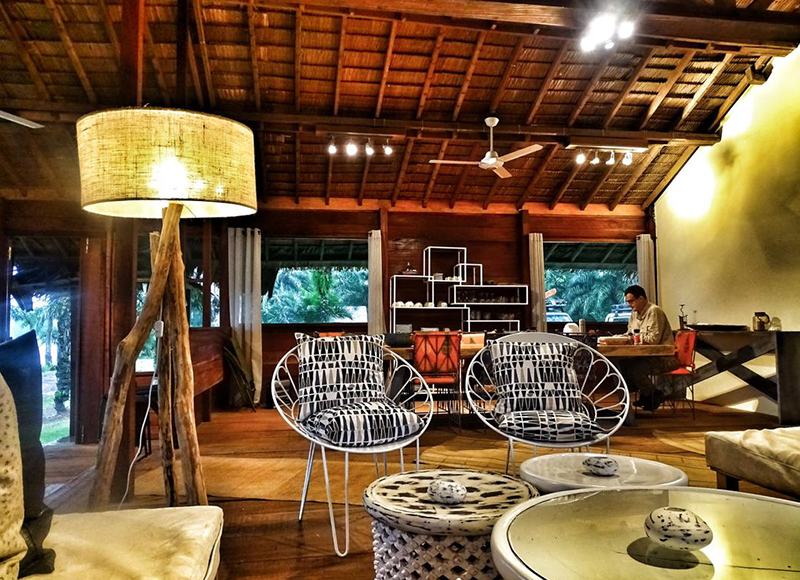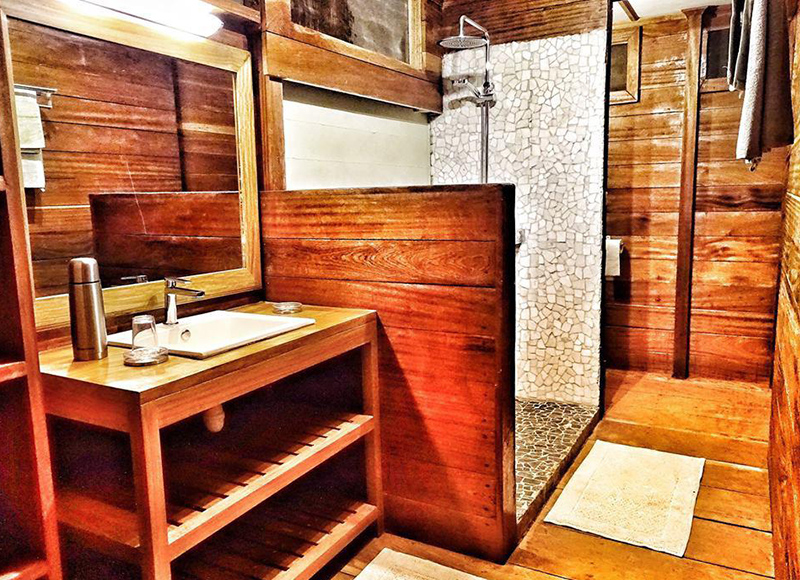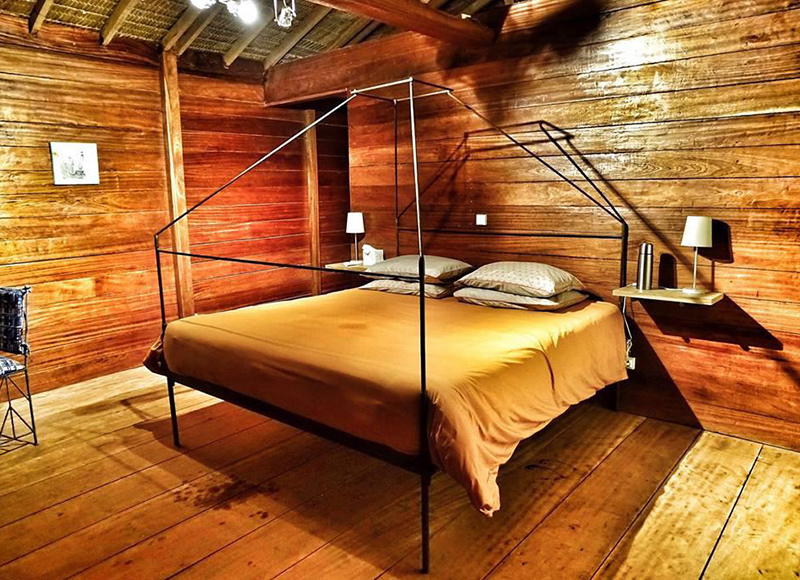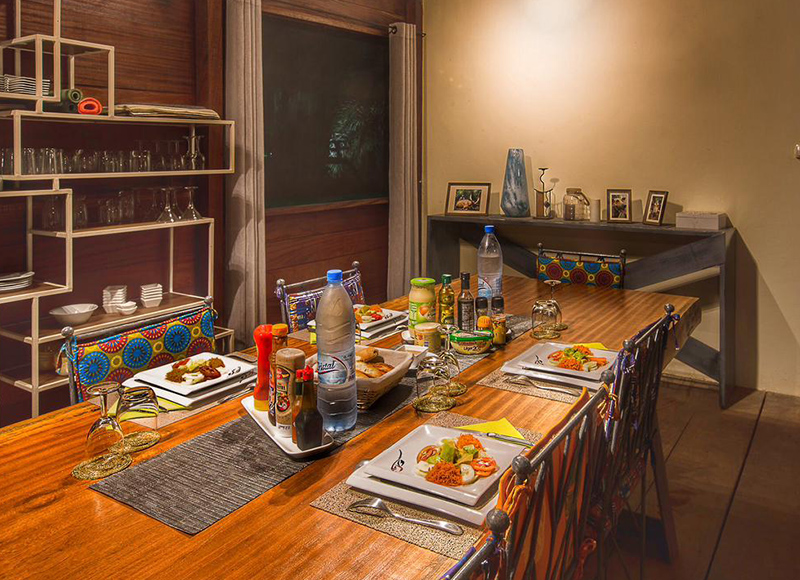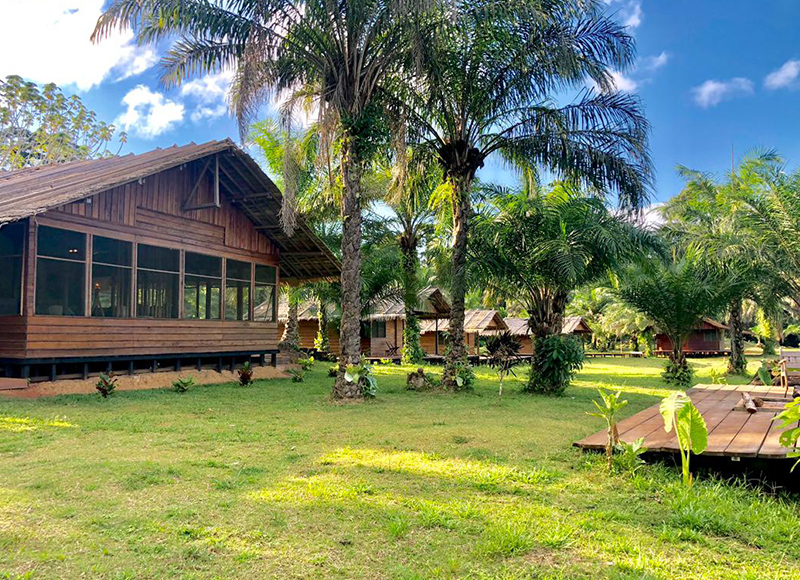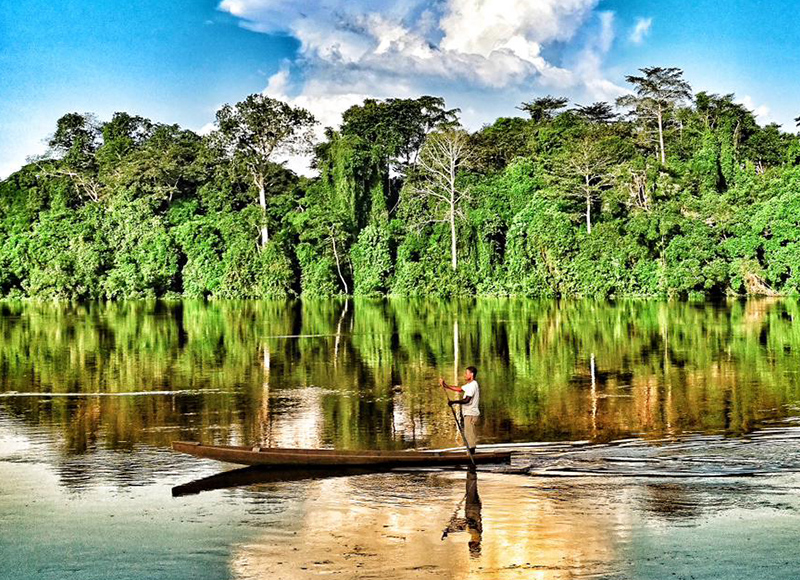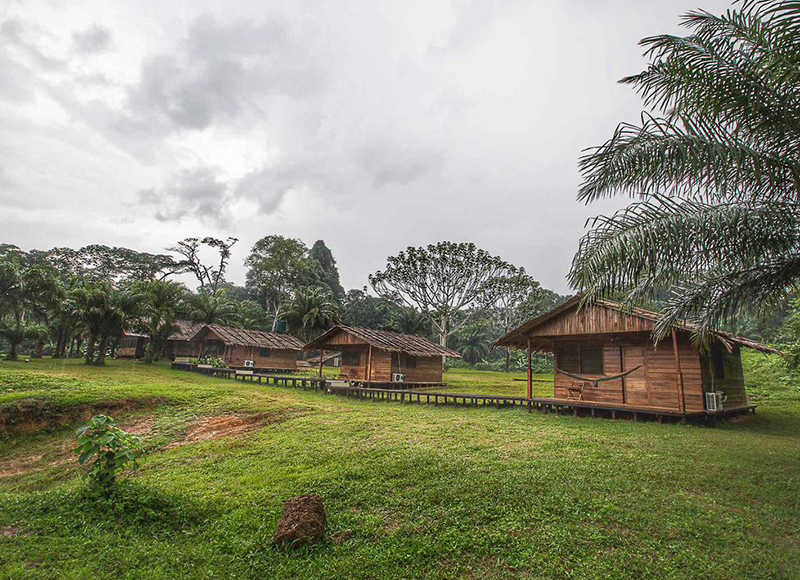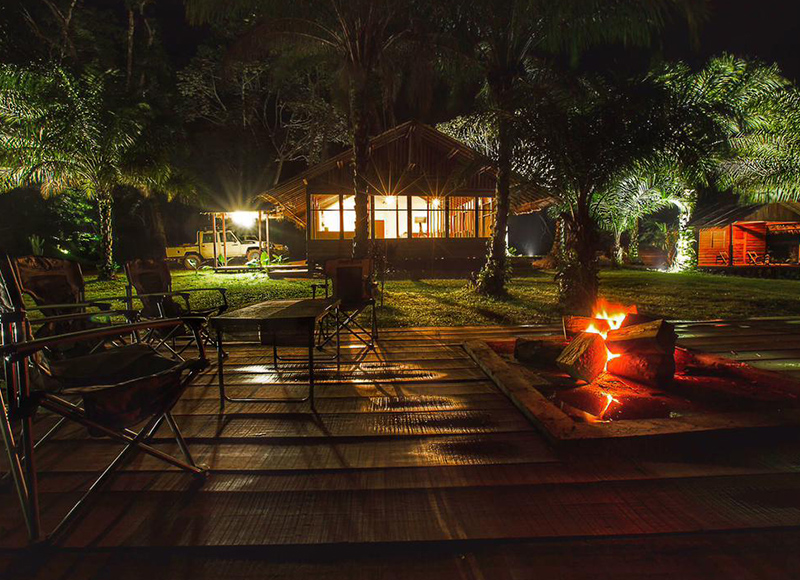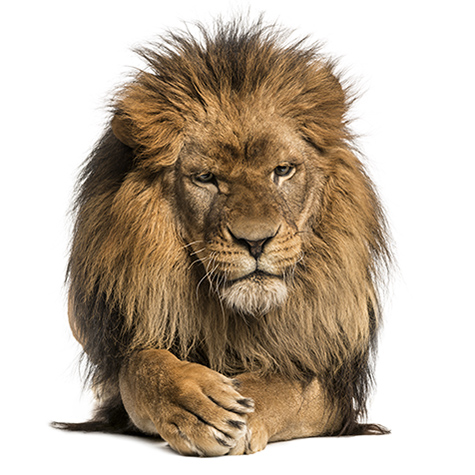About the camp
The hunting camp consists of 3 solid lodges. Each hut has its own air conditioner, bathroom, and toilet. Electricity and satellite phone are also available.
Fishing for the Naked Tigerfish can be arranged in the Sangha River, which is 2 hours away from the camp after the hunt has come to an end. The large Tigerfish is known to weigh up to 80kg. and a Piranha-like bite.
This is your chance to hunt in the newly discovered Congo-Brazzaville for exotic plains game species, Buffalo-Dwarf and Duiker. This hunt will take place in Northern Congo. This area has been logged in the past, so there is an extensive network of roads to facilitate hunting.
The hunt begins the day after your arrival from tall jackals along the Mokoro River or logging roads. The other methods of hunting are stalking and habituation.
Bongos can be hunted by searching open areas and roads, as they have a habit of coming out through openings to feed on newly emerged grass at the edges of open areas. This is one of the few areas in Africa where Bongo can be caught using this method. A large amount of logging roads from previous concessions allows for this relatively easy method of hunting no Bongo.
For Sitatunga hunting, boats are used to access water and swampy areas that the Sitatunga frequents.
You will see Gorillas and a wide variety of exotic wildlife on this Congo hunting safari.



